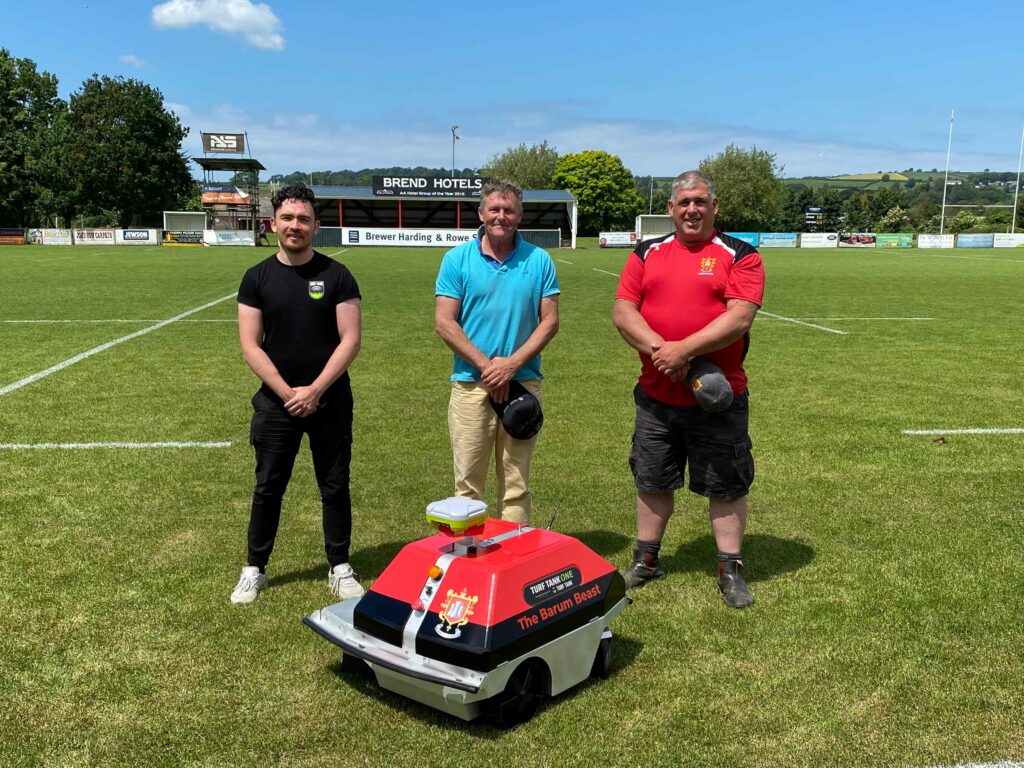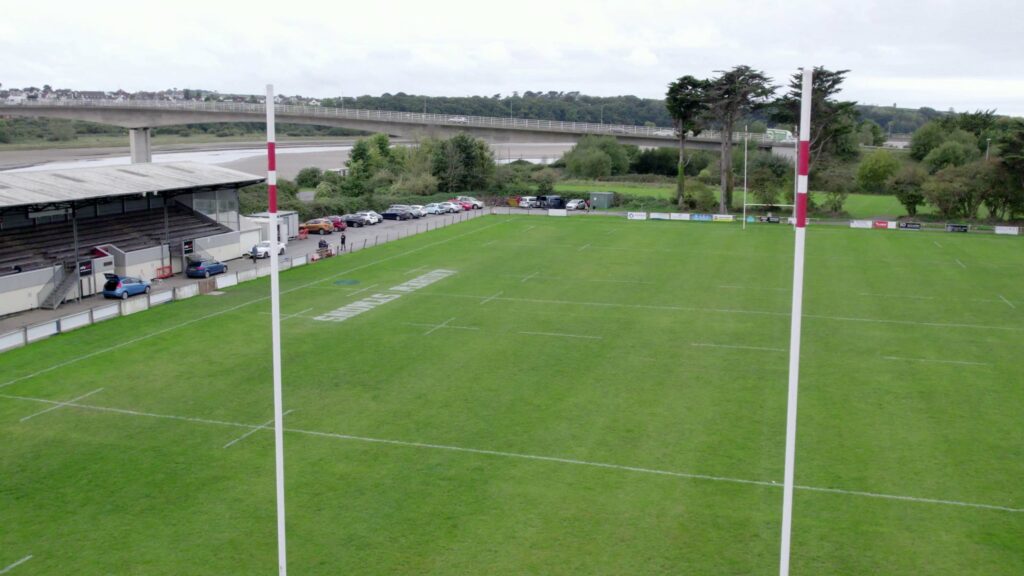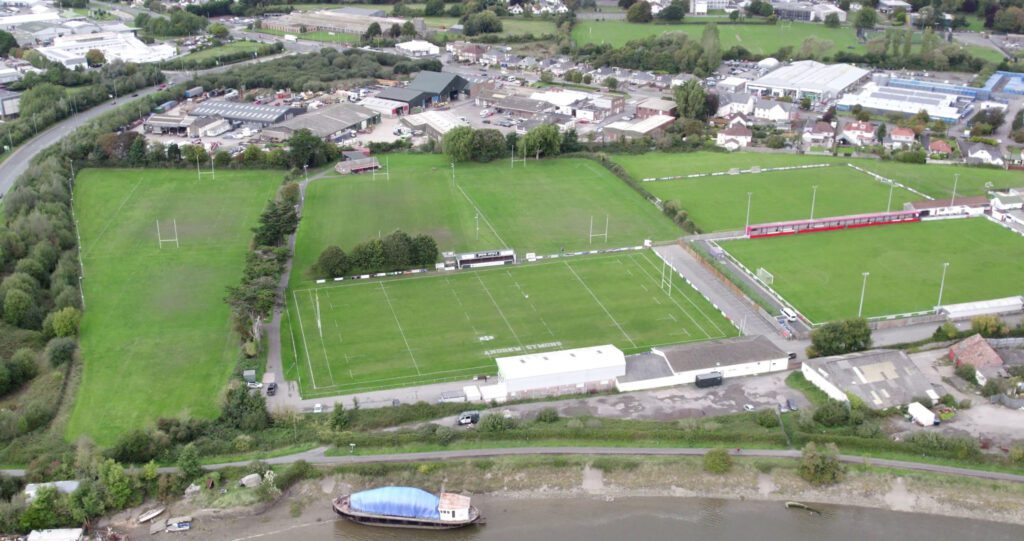The Barnstable Rugby Club was funded in 1877 serving the town of Barnstable and the surrounding areas. Barnstaple RFC prides itself on being a community club which houses two senior teams and numerous juniors teams, raging from Under 7’s all the way up to Under 18’s.
THE CHALLENGE
For a grassroot club, one of the biggest challenges is the limited resources, which makes it difficult to afford high-end technologies. However, the traditional way of marking pitches manually is an inefficient process.
THE SOLUTION
So they decided to shoot two birds with one stone and get a Turf Tank line marking robot.The robot is not only efficient and accurate, raising the standard of the facility–it is also self-sustained. In fact, it generates enough income to cover its costs and then some. The extra income comes from logos and messages that the robot creates which are sold for sponsorships.
£6,000 revenue generated in a year
Barnstaple Rugby Club is currently in the National League 2 but aspires to join National League 1. As budgeting is an important part of any goal, they decided to be innovative and seek out new ways to generate revenue for their club. What initially caught their eye was the Turf Tank line marking robot and its potential for logo and letter creation. They quickly realized they could use these features to mark out sponsors names in the grass and thus generate income for their club.
The Turf Tank has probably bought in enough to pay for the machine outright. And also, now on top of that, it’s bringing in about five to 6000 pounds per year which covers all the paint that I need for the pitches here.
Trevor Wayborn, Head Groundsman
“So the machine is paying for itself.”
Trevor Wayborn, the Head Groundsman for Barnstable Rugby Club explains how easy the process to create these special markings is.
“The machine comes with lettering all built in so you just type it into the little pad, it then prints it off.”
Trevor explains that creating custom logos is an easy process too and “the customer support from Turf Tank has been second to none”. As an example, one of the sponsors wanted their logo marked on the grass. Trevor contacted Turf Tank’s development team and they created a custom design within weeks. Then, all Trevor had to do was use his tablet to select the logo and watch as their robot painted it.
Trevor is happy he can use the robot in this way, because without it, painting names for logos would be a nightmare. On one hand, the process would be more difficult, having to carry stencils and spray them in the pitch. But on the other hand, the stencils themselves are expensive, and being fixed in size and shape means the club needs to buy new ones for different sponsors or in different sizes. With the robot, they have all in one machine, which can easily be customized for every occasion.
I think if you look outside the box, you can really make some money from this machine.
Trevor Wayborn, Head Groundsman

Professional-looking pitches
As the machine is paying for itself, it was easy to approve it in the budget, taking into account all the other benefits it brings to the club.
One aspect they love about their robot is the accuracy of the lines they can produce now. Trevor explains that manual marking is an inaccurate process. Even for the experienced grounds people it is difficult to get the lines perfectly straight because it is hard to notice when they lines start to creep.
“You don’t realize it, even people who are doing it on a regular basis, how you can sometimes get a little wobble. This machine, being GPS-lead doesn’t wobble. It is deadly-straight every time.”
The accuracy of the lines is key for any game, as it can hugely affect the score. Without clean lines, it can be difficult to tell if the ball is out of bounds, which would not make for a fair game.
We actually now have lines that are deadly straight. The referees are loving it because they don’t have to sit there and work out if it’s on site or off. And you know, it is the same every single time, you don’t have to worry about what the robot’s doing.
Trevor Wayborn, Head Groundsman
In the past they saw other robotic line markers do initial marking, which were quite impressive at the time, but Trevor was not convinced by the quality of the overmarking of those machines. When they saw the accuracy of overmarking with Turf Tank, that’s what sold them on the robot.

5 hour work turned into 5 minutes
Apart from the impressive end results, Trevor is also happy with how the line marking process itself changed.
Every week, they have to mark five junior pitches and the first team pitch needs to be marked every two weeks. What used to take five hours to mark one rugby pitch, it is now reduced to just five minutes setup in the tablet and the robot then does all the work. As the process is so straight-forward, Trevor is the only one that needs to operate the robot. And with the time he saves on one pitch, he is free to focus his attention on the rest of the pitches. Him and the robot seem to be doing a great team.
I can set the machine going. And then I can crack on with the other jobs that need doing. So I could be mowing and the machine’s coming in behind me and mark in the pitch afterwards.
Trevor Wayborn, Head Groundsman
Since the process is so fast and easy, they are able to take on other projects with the robot in the area.
“The other thing that we looked at was actually going out and doing initial line marking for other clubs, football clubs, rugby clubs within the area, and that has brought in a tremendous amount of money as well.”
To draw the line
The Turf Tank robot has proven to be a good investment for Barnstaple Rugby Club. They found a creative way to use the robot as a source of income generation, by selling robot-created logos and letters to sponsors. This way they managed to afford a world-class machine for their pitches, improve their efficiency, their professionalism, while also raising money for the club’s other projects.




